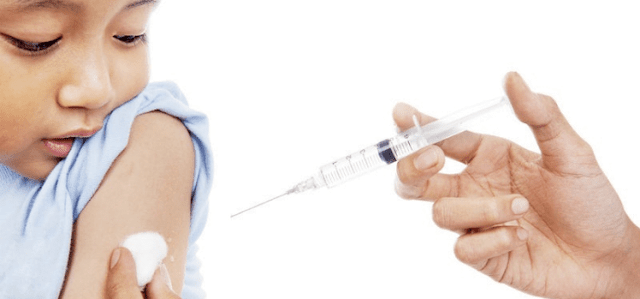How to Tackle Dehydration in Kids?
An average kid's body is around 60% water, while an average infant's body holds around 74% water. This body water percentage can fluctuate with the child’s age, sex, and the daily level of fluids/water intake. It must be within the normal range so that body temperature can be maintained and body fluids can be made for normal daily functioning. If not so, it can become a cause of medical concern, known as dehydration. Severe dehydration could put the child’s life at stake.
In this blog post, let’s learn about dehydration in kids and how to tackle it with Dr. Promilla Bhutani, General pediatric doctor in South Delhi.
What is Dehydration?
Dehydration refers to insufficient fluids containing electrolytes or water in the body, which impairs the body's functioning. Across the globe, dehydration is known to be a major cause of morbidity and mortality in infants and young kids.
Causes of Dehydration in Kids
Dehydration in kids can be due to:
Increased loss of fluids- resulting from vomiting, diarrhoea, or both (gastroenteritis); diabetic ketoacidosis; excess perspiration/burns; intake of diuretics; or 3D space losses like the intestinal lumen in bowel obstruction or ileus
decreased intake of fluids- resulting from mild illnesses like pharyngitis or serious illnesses associated with fever, tachypnea, or vomiting.
Kids may be dehydrated with either of the two reasons mentioned above or both. They are prone to the ill effects of dehydration because of their high metabolic rate, increasing baseline fluid requirement; higher evaporative losses as a result of a greater ratio of surface area to volume; and inability to communicate about their thirst or get fluids.
Signs of Dehydration in Kids
A dehydrated kid usually experiences:
A dry or sticky mouth, lips, throat, or tongue
Crankiness
Sunken eyes
Less or no tear production
Sunken fontanelle (soft spot on the top of the head) in babies
Few wet diapers (in case of toddlers) or no visit to the toilets for hours (in case of older children)
Dizziness/drowsiness
Headache or nausea
Crankiness
Thirst
Lethargy
Faster heart rate and breathing
Irritable or confused
Cold hands or feet.
The extent of symptoms that show up in kids varies according to the degree of water/fluids deficit and by the level of serum sodium. In the space where there is fluid loss, there is low serum sodium. Kids with hypernatremia are more ill than those with hyponatremia. Hypernatremia is a condition where water moves into the intravascular space from interstitial and intracellular spaces. Hyponatremia is when the water shifts from the intravascular space into the interstitium.
Diagnosis of Dehydration in Kids
To assess the level of dehydration in kids, the kids’ medical record is reviewed, and a physical examination is conducted. Their signs of dehydration and their change in body weight are assessed. For moderately to seriously ill kids, laboratory testing to check for electrolyte levels in the body is done.
There are three classes of dehydration in kids:
Mild- No hemodynamic changes (alterations in flow and forces of blood in the system); approximately 3 to 5% body weight
Moderate- Tachycardia (faster heart rate); approximately 6 to 8% body weight
Severe- Hypotension with impaired perfusion (low blood pressure leading to blood supply to the tissues and organs); approximately more than or equal to 10% body weight.
At-home Care for Mildly Dehydrated Kids
General Pediatrician Doctor in Delhi recommends that kids with mild dehydration be provided with oral rehydration at home. The liquids that can help rehydrate the kids include oral rehydration solution (ORS) containing the right amounts of salt, sugar, and water, and electrolyte ice pops (for older kids). The liquids can be given every 5 minutes. Infants or toddlers can be given 10 mL of liquid at a time, and older children can be given 15 mL of liquid. If the kid refuses to drink ORS or vomits, take a 10-15 minute break.
When to Consult a Pediatrician About Dehydration in Kids?
See a pediatric doctor at the earliest if the kid:
is not taking any drinks for more than a couple of hours
is aged below 1 year and has not had breast milk or formula, only oral electrolyte solution in the past 24 hours
vomits frequently in 24 hours
has vomit of red, bright green, or brown color
is not been eating food for the past 3-4 days
is still showing dehydration signs despite being provided with rehydration
health is not improving.
How Does a Pediatrician Tackle Dehydration in Kids?
The best approach to tackle dehydration in kids is decided by the pediatrician by considering the following:
Existing deficit of electrolytes/fluids
Fluid resuscitation requirement (for kids with signs of hypoperfusion)
Ongoing electrolyte losses
Maintenance requirements (in case of insoluble losses; linked to metabolic rate and affected by body temperature).
The treatment is fluid replacement, if possible, orally or else through IV drip or nasogastric tube (in severe cases or when there is frequent vomiting). After the treatment, there is a need for ongoing monitoring of the child’s vital signs, weight, clinical appearance, urine output, and serum electrolyte levels to maintain their body fluids.
For more details take help of a Pediatrician in South Delhi, Dr. Promilla Bhutani today!




Comments
Post a Comment